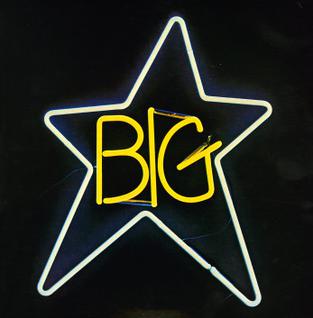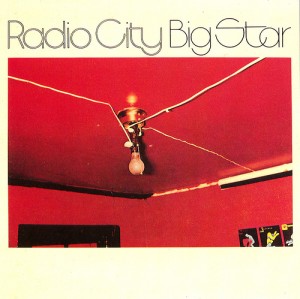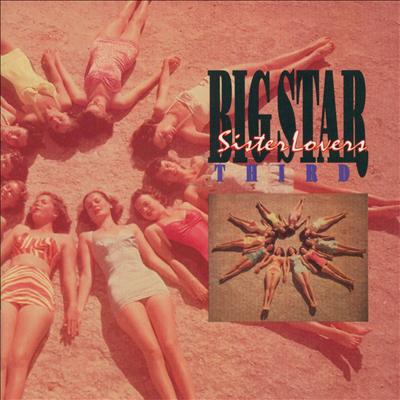Recently, I had as the featured artist segment on my show Big Star. At the time, I thought of it as basically a reset: I was going back to the beginning and playing the first major power pop band. Big Star can be said to be the first band that basically was trying to emulate The Beatles, and artists such as R.E.M., the dBs and Bill Lloyd have cited Big Star as an influence.
In 1967, Alex Chilton became the lead singer for the Box Tops, a blue-eyed soul group that had a #1 hit with “The Letter” when he was sixteen. The band had a few more hits before Chilton left the band in 1970. He recorded a solo album; then Chris Bell asked him to join Icewater, comprised of Bell, drummer Jody Stephens and bassist Andy Hummel. They renamed themselves Big Star (after Big Star Markets, a grocery store near Ardent Studios). They signed with Ardent Records, a label established by Ardent Studios founder John Fry and started work on their first album.

1 Record (April 1972): What is interesting about Big Star’s first album is how it holds up over the years. It could easily pass for an album released ten years later or even twenty years later. Although the freshness is gone – after all, many power pop bands have followed the same formula over the years – there is no denying that these are well-crafted pop songs. We get “Feel”, which starts the album off on a good note, and “The Ballad of El Goodo”, a lush, dreamy ballad. “In the Street” is familiar as the “That ’70s Show” theme song. “Thirteen” is an acoustic ballad that states “Rock and roll is here to stay”. These four songs are worth the price of admission alone, but there are other solid songs.
Unfortunately “#1 Record” did not sell well. Ardent was an independent label and Stax Records handled distribution. Stax apparently didn’t know how to distribute a power pop album. When Stax signed a deal with Colombia Records, it did not improve matters, either; Columbia removed the existing copies of #1 Record from the stores.
By the end of 1972, Bell had quit Big Star, which had disbanded. But after a few months, Chilton, Stephens and Hummel decided to reform Big Star, and the trio resumed work on their second album (work had begun on the album when Bell was still a member of the band).

Radio City (February 1974): The quartet had been reduced to a trio, which you think would have doomed the band. But this album is actually better than the previous one, with several songs written or co-written by Andy Hummel, including the classic “Way Out West”, a song written for Hummel’s girlfriend. We start to see the beginnings of Chilton’s eccentricities, and there are several standout songs, including “O My Soul”, and the single “September Gurls” b/w “Mod Lang”.
Again, sales of “Radio City” failed due to poor marketing and poor distribution. Colombia refused to distribute the album following a disagreement. Sales of the album were far greater than that of “#1 Record”, but it only sold about 20,000 copies.
With the failure of two albums, Andy Hummel left to go back to school, and the band was reduced to a duo of Chilton and Stephens, who returned to Ardent Studios to work on a third album.

Third/Sister Lovers (March 1978): Now that both Bell and Hummel had left the band, there was nothing to stop Chilton from becoming a dominant creative force, and it’s not without justification that this album is called “Chilton’s untidy masterpiece”. It includes my personal favorites “Thank You Friends”, “Holocaust”, and the Christmas song, “Jesus Christ”.
By now, Ardent Records had folded, and John Fry and producer John Dickinson flew to New York with promotional copies and met with a number of record labels. But they failed to generate interest in the album. The album was not released until 1978, when PVC, and independent label, was given the tapes and released the album in the UK, and then a year later, released it in the U.S. In that same year, Chris Bell died in a car accident at the age of 27.
That would be the end of the Big Star story…if not for the fact that the band was cited as influences with the new generation of power pop artists and continued to have a cult following. They would reunite with guitarist Jon Auer and bassist Ken Stringfellow (of the Posies) joining Chilton and Stephens. The resurrected band made its debut at the 1993 University of Missouri spring music festival, and they would tour Europe and Japan. They also released a new album.

In Space (September 2005): This is not really a Big Star album, but more of an Alex Chilton album – albeit a very good Alex Chilton album. While it doesn’t really achieve the high water mark of the three albums Big Star recorded from 1972 to 1975, it is quite good. Highlights include “Dony”, “Lady Sweet”, “Turn My Back on the Sun”, and the funky “Love Revolution”.
Alex Chilton suffered a fatal heart attack on March 17, 2010 and Andy Hummel died four months later of cancer, so now Jody Stephens was the last surviving member. In May 2010, the surviving members put on an Alex Chilton tribute show, and Stephens said it would be Big Star’s last show. Apart from the occasional reunion concert, Big Star is history – but their legacy lives on.
